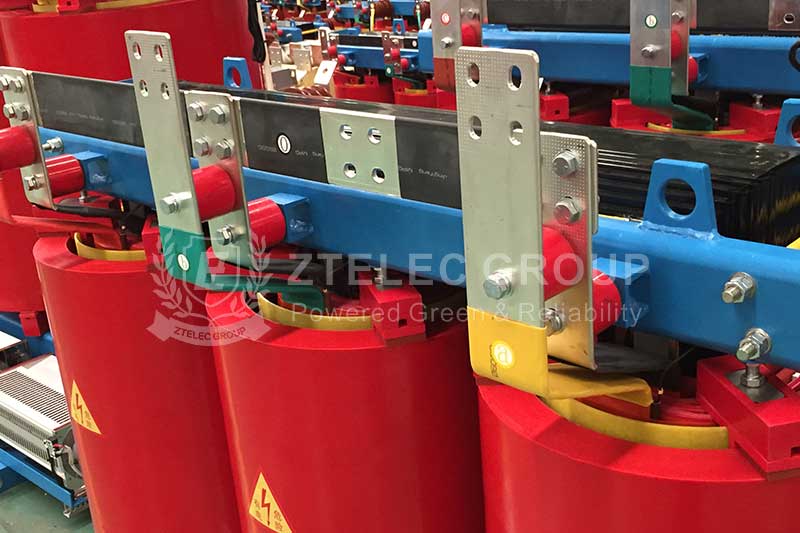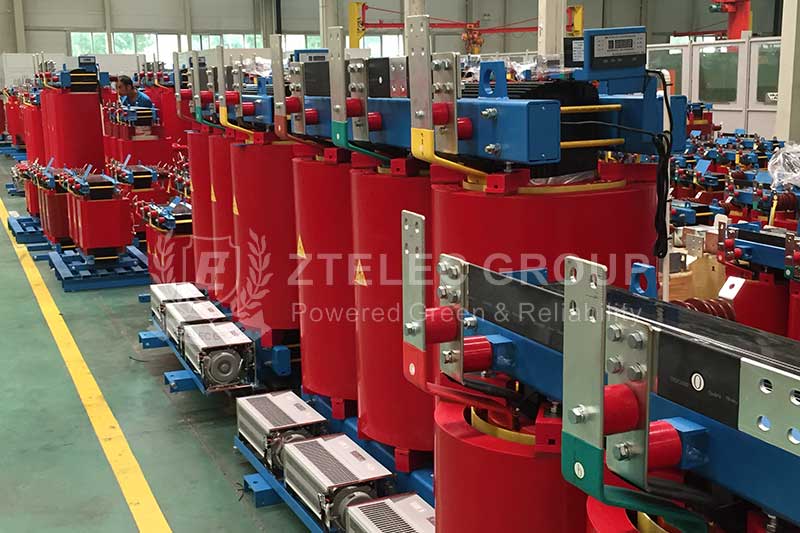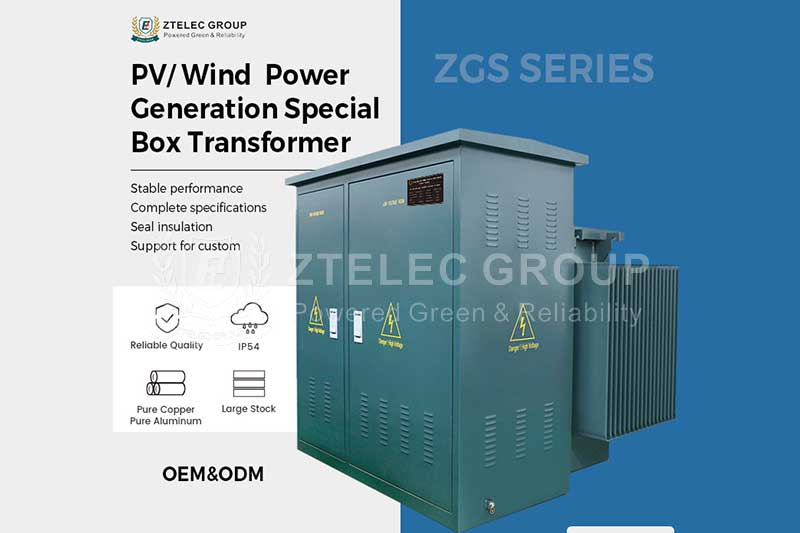Design and optimization of dry-type transformers
Time:2025-02-14 Auther:ZTelec-www.ztelectransformer.com
With the rapid development of the power industry, dry-type transformers have become an indispensable part of the current distribution network. The advantages of dry-type transformers are high safety, no maintenance and repair, low noise, and no liquid leakage. Therefore, in the wide application of transformers, dry-type transformers have become a field with great potential.
However, many dry-type transformers on the market have some problems during use, such as thermal disconnection of switches, overload and other problems. Therefore, in order to further improve the performance and service life of dry-type transformers, dry-type transformers need to be improved, designed and optimized.

The underlying principle of dry-type transformers
The underlying principle of dry-type transformers mainly involves the principle of electromagnetic induction and the principle of electrical engineering. In the use of dry-type transformers, the most common principle is the principle of electromagnetic induction. Specifically, dry-type transformers use the action of magnetic fields to achieve the transmission of current and voltage. During the operation of the transformer, the current at the input end will generate a magnetic field, which will cause the voltage transmitted to the output end to change. In addition to the principle of electromagnetic induction, dry-type transformers also need to use electrical engineering principles to control the output current and voltage of the transformer.
Optimization design strategy
In order to improve the performance and service life of dry-type transformers, a series of optimization design strategies can be adopted.
1. Use advanced optimization design methods: Use modern computing technology and optimization design methods, such as finite element analysis, genetic algorithm, particle swarm algorithm, etc. to optimize the design of dry-type transformers. These methods can more accurately simulate the operating status of the transformer, identify potential problems and make improvements.
2. Optimize the core and winding design: The core and winding are the core components of the dry-type transformer, and their design directly affects the efficiency and loss of the transformer. By optimizing the shape, size and lamination factor of the core, as well as the number of turns, wire diameter and arrangement of the winding, the loss of the transformer can be reduced and the efficiency can be improved.
3. Improve heat dissipation performance: In view of the poor heat dissipation of dry-type transformers, a series of measures can be taken to improve their heat dissipation performance. For example, increase the heat dissipation area, optimize the heat dissipation structure, and use high-efficiency heat dissipation materials. These measures can significantly reduce the temperature rise of the transformer and extend its service life.

4. Select energy-saving materials: In the design of dry-type transformers, energy-saving materials such as amorphous alloys should be used first. These materials have excellent electromagnetic properties and low losses, which can further improve the energy efficiency of dry-type transformers.
5. Strengthen reactive power management: In the distribution grid, a large number of inductive loads require transformers to provide reactive power. By strengthening reactive power management, such as using reactive power compensation devices, the reactive power loss of transformers can be reduced and their energy efficiency can be improved.
6. Intelligence and monitoring: Integrate intelligent monitoring systems to monitor the operating status of transformers in real time, such as temperature, humidity, load, etc., and conduct fault warnings. Remote monitoring and control are achieved through Internet of Things technology to improve the management efficiency of transformers.
7. Mechanical strength and seismic performance: Consider mechanical strength and seismic performance in the design, use reinforcing ribs and seismic brackets to improve the vibration resistance of transformers. Test the mechanical properties of materials to ensure their reliability under extreme conditions.




